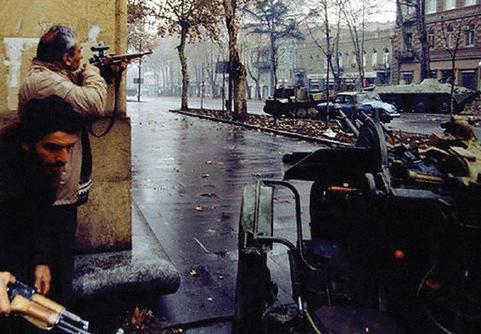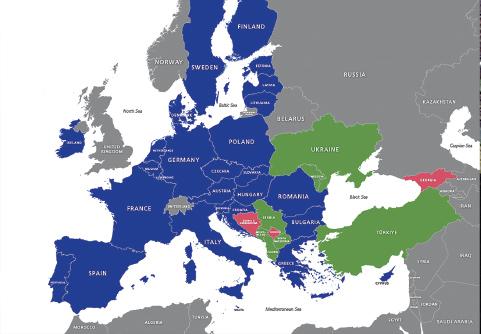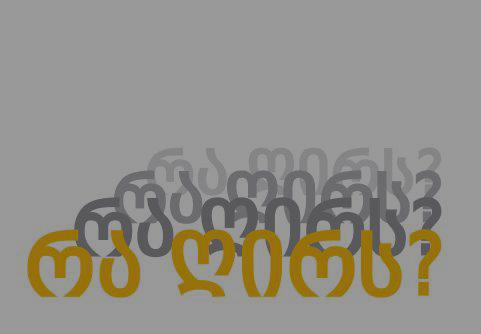Author : Tamar Alavidze

What benefits does the British royal family bring to the table? If internet sources are to be believed, in 2019, before the pandemic, the income received by the Exchequer from the royal residences and estates (the so-called Crown Estate) exceeded £410 million. That means that thanks to the royal family, more income came into the national budget than was spent on the royal family from the budget. Numbers and pragmatism aside, for the vast majority of Britons in the 70s of the 20th century, the Royal Family, each of its members, and the institution of the monarchy as a whole were an organic part of the British experience. No self-respecting Briton could have conceived of being deprived of the monarchical crown. To speak ill of a member of the Royal Family, let alone a monarch, let alone to make jokes about them, was completely unthinkable.
And now imagine a portrait of the young virtuous Queen Elizabeth II by the legendary British photographer Cecil Beaton, with Nazi swastikas painted over her eyes, a safety pin emblazoned across the queen's mouth and the inscription “God Save the Queen!” This is what a T-shirt designed for the British punk rock band Sex Pistols looked like in 1977. The band wore this T-shirt to perform a new anti-establishment song, “God Save the Queen”. The notorious T-shirt was designed by the girlfriend of the Sex Pistols' manager Malcolm McLaren.
The name of the girlfriend was Vivienne Westwood.
You may have already realized that Vivienne was a born rebel. She chose fashion design as a career to give material expression to her rebellion. Her first major “rebellion” began in the late 1960s with her former partner Malcolm McLaren: Let It Rock, their first joint shop on London's King's Road. In the shop you could find clothes, accessories and jewelry with Nazi symbols and fetish elements; clothes adorned with pins; soft, see-through, large-knit jumpers. But among the anarchist items Westwood was creating at the same time were Scottish tartan, the British Union Jack and portraits of monarchs. Westwood recalled how the name of the shop changed with each new collection: first it was Too Fast To Live, Too Young To Die, then SEX and, for the punk period, Seditionaries.
Anarchy, nonconformity, the fight against authoritarianism, the desire to break taboos and stereotypes – all this came together in British punk, which Westwood and McLaren are said to have inspired. True punk denounced the older generation and the political system: The former for abdicating responsibility and passing it on to the younger generation, the latter for the injustice, suffering and death that prevailed. Westwood believed this. In the midst of continuing economic stagnation, the punk wave was the perfect solution for disillusioned and unemployed British youth to “let off steam”, and they needed the right clothes and accessories to get their emotions flowing. And there was a Westwood and McLaren store for that.
The popularity of the shop was instrumental in establishing and promoting Vivienne as an independent fashion designer. Much success and recognition came in 1981 with her Pirates collection. By this time McLaren and Westwood were no longer together, and on McLaren's advice Westwood presented the collection under her own name at London Fashion Week. Pirates was a kind of cultural game: You leave your island and go in search of the historical past and the Third World. Napoleonic hats, Marie Antoinette dresses with puffed sleeves, baggy trousers made from fabrics inspired by Native American patterns, eclectic colors… Each garment repeated the pattern of historical costumes from different periods. However, this was not a collection of museum exhibits: The fabric for each costume was chosen to make the garments vibrant and contemporary. This collection was different from the others presented by the leading designers of the time at the Paris and London Fashion Weeks.
It was also a kind of provocation on Vivien's part, a march against all things fashionable and trite. In a post, Westwood recalled that this was her rebellion against twentieth-century dogma, as if the past was over and it was time to do something new. On the contrary, Vivienne argued that true art is complete and timeless, and that today we must look to the past for inspiration: “Without roots and art, we can't have laboratories and science. Culture is essential to making people better beings.”
Westwood pushed the fight against dogma and propaganda through art even further in her 2005 AR (Active Resistance) collection, where she printed Rembrandt in a black beret on a T-shirt as a hero of culture: “The art lover is a freedom fighter for a better world. He believes that studying the past will help him form his own opinions and act in the present”.
Inspired by this idea, Vivien instructed her students in Berlin to visit art galleries and, before moving from one room to another, to choose a particular work to save. According to Westwood, if they played this “game” systematically, after six months they would want to save another work because they would have trained their ability to judge and distinguish.
As part of an AR campaign in 2007, Westwood organized small art reading evenings across the country: Friends of Vivien dressed up as twenty famous characters (including Pinocchio, Alice, and Aristotle) and spent forty minutes talking to audiences about art in eighteen different cities and universities.
In the last decade of her life, Westwood has become an environmental activist, trying to save the world from global catastrophe. She identified the actions that needed to be taken to stop global warming and, through the platform Climaterevolution.co.uk, worked with NGOs to raise people's awareness. Even at 81, she dressed up every Friday, sat in front of the camera and spoke to millions of fans about global issues via Instagram: “It's my duty to understand this world. I understand it. It's everyone's duty in exchange for life. We can change the future. If you start thinking that way, it will change your life, and if you change your life, you can change the world.”
Vivienne Westwood died in London on 29 December 2022.










